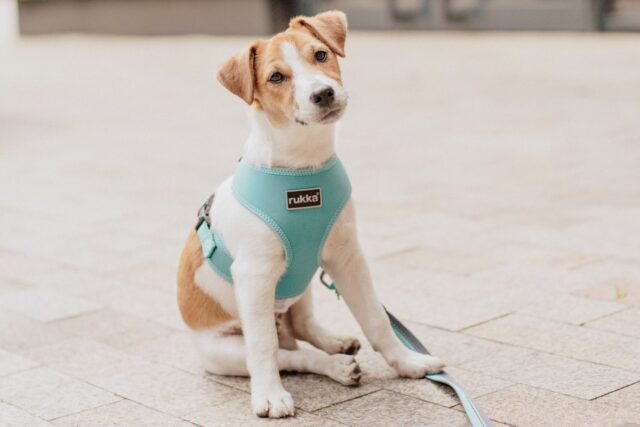
11 Mar How to be a Community-Minded Pet Parent
The Dual Role of Pet Parent and Good Neighbor: It’s More Than Just Picking Up Poop!
One thing you and I probably share is a deep love for animals especially dogs. We’ll always have that common ground to chat about. But what about people with whom you don’t have that immediate common connection? Not only do we regularly bump into dog people who treat animals differently than we do – there are also people who aren’t really all that keen on having animals around them at all! No, I don’t understand that either.
People find personal joy in different ways
Animals, especially dogs are absolutely a central part of my life. My dogs are one of the first things I care for in the morning and the last things I care for before I go to bed. I spend a big chunk of my income caring for them. (But we’re not gonna talk about that..) I can’t imagine them not being with me, so it’s hard for me to understand how other people live in a home where animals are completely absent.
But people pull joy from lots of different things or beings. Travel, art, their children, spouse, human friendships, rare and beautiful belongings, music, the intricacies of a racing car engine, the thrill of mountain biking or going on an all-day hike. While I share some of this, others I don’t get at all.
Why do some people choose not to share their home with a pet?
There are lots of reasons people in your community choose to live pet-free, and it often doesn’t have anything to do with actually disliking animals.
- Some people would love to have a pet, but their income, landlord, health, or lifestyle don’t permit it. If you ask people why they are currently petless, they’ll likely mention how they have to travel for work, are allergic, have a no-pets lease – not that they don’t like pets.
- Some people have had a traumatic experience with an animal and now fear or avoid some types of pets.
- Others simply have a phobia or unidentifiable anxiety about some species of animal, like honestly, spiders always make me jump! I don’t go out of my way to squish them, but I don’t exactly welcome them into my home.
- Cleanliness and order are top of mind for some people, and the extra chaos a pet can add to a household just isn’t for them. That’s something I had to adjust to as well.
- Many people just didn’t grow up with personal experience around animals. If you didn’t grow up with a cat or hamster, trying to figure out how to safely lift one without getting scratched or dropping them can be daunting.
Ways to be more inclusive in a pet-diverse community
While we like to say “we’re a pet-loving society,” we share our neighborhood with people who have other people and pastimes that are just as important to them as my dogs are to me. Those households are full of friends, co-workers, and neighbors who don’t deal daily with pet fur, poop, zoomies, barking…, you get the idea. Nor do they probably want to.
Here are a few ways you can be a kind neighbor to your entire community – pet-parents and pet-free alike.
- Be mindful of leash lessons – People passing by don’t really want to have to fend off a bounding unleashed dog, unwrap themselves from a flexi-leash, or worry that a cinched-up dog is strangling when they’re pulling hard against a short leash. Training our dogs to walk politely on a leash is the first rule of community-centric dog care. While teaching leash manners takes time this is essential in our modern world and well worth the time and effort.
Wheeling a stroller-bound dog or cat doesn’t free us from responsibility, either. Make sure stroller pets are clipped into their rolling ride. Close the top if your pet seems anxious or barks at passersby. Be mindful of kids at eye-level on bikes or in strollers, or anyone who seems uncertain about passing by your pet. A cat in a stroller or on a leash can make even other cat-lovers a little nervous, if they think the cat might escape.
- Maintain cafe manners. Restaurants who have voluntarily opened their patios to pets have willingly accepted the extra risk and responsibility. Here in Western North Carolina both Hendersonville and Asheville have several places that welcome pets. Before bringing your pet to a brewery or cafe that welcomes them, train your pup to lie quietly at your feet at home first then transfer this to parks, and other less-crowded areas and finally to the more crowded venue of your choice. While it often seems like “everyone” is asking to pet your dog at the cafe, chances are almost certain there are others who are hoping your dog will stay put and not push their wet nose or sharp paws into their lap. Manners are a must for us all but remember, this will take some time to teach. Be patient and set your pup up to succeed!
If your dog begins to get restless or starts to bark, whine or do other disruptive behaviors, take a page from the book of a polite parent with a ceaselessly crying toddler and wrap up your dinner to go, or take your furry infant for a brief walk until they settle down.
- Just. Poop. We dog guardians scoop poop daily. Except for the first few years of parenting an infant or toddler, non-pet-owning humans maintain a reasonable distance from the stuff, and a pile of dog or cat poop on the sidewalk, lawn, or garden adds a big element of ick to their day. This simple ick can escalate into frustration or simmering rage if a pet-free neighbor has to scoop dog or cat excrement from their own property regularly. Imagine if your neighbor’s kid pooped on your stoop every day! Scoop your pup’s poop and consider a catio for your outdoor-loving cat.
- Distract from barking. We pet guardians can tell when our dog is just barking to say “I’m here!” or barking to say “back off.” People unfamiliar with dogs may assume every bark from a passing dog is a threat. While it’s not always possible to train a dog not to bark when they are out and about, we can train them to attend to us instead of passing dogs or other exciting distractions with proper positive training. This is one of the main reasons to start working with your pup in easier locations first.
- Don’t let your pets make their neighbor’s home their own. We pet lovers tend to assume most people find our dog or cat just as cute as we do. While some of us keep a close eye on our pets, some of us may not regard our dog’s occasional excursion over to the neighbor’s patio to say ‘hi’ or our cat’s tendency to stretch out for a nap on their car hood to be a big deal. But even if our neighbor welcomes a wandering animal with a friendly pat, it doesn’t mean they necessarily want daily unannounced visits or cat tracks across their newly washed vehicle.
- Zoomies. They make pet parents laugh, but a sudden case of the zoomies can startle someone who has never experienced this in a home or yard. If you can tell your dog is about to erupt into unrestrained, joyous activity, do give your visitors or dog park companions a heads up, because sometimes a dog’s all-out run in your home or at the dog park isn’t just alarming, it can even knock people down!
- Start a conversation. Pet guardians are usually alert to people who want to pet our dog or cat. We’re ready to say “sure, go ahead,” or “no, not now, thanks, but we aren’t usually as aware of people who are quietly avoiding us or who go stiff when a dog settles down by their owner’s feet at the next cafe table. If you notice someone seems uncomfortable around you and your dog a quick “is it ok if my dog sits here with me next to you? I can move over there, is a conscientious gesture, especially when there are other seats you could move to. Or strike up a conversation if you see them looking at your pet. “Do you have a dog at home? I’ve had Hero here for six years, and he’s great with people.”
- Be self-aware. Is your dog really a good citizen? Not many of us have a perfectly trained pup, after all. Does your pooch swerve toward every passerby when you’re walking on a leash, or bark at every dog they see? Do you ever let your dog off-leash even though they aren’t all that great about returning immediately to your side when called? If you notice someone giving you and your dog the hairy eyeball, give your own behavior a quick scan and ask yourself if someone who isn’t a dog fan might be alarmed by it. Keep your dog leashed if they aren’t perfect on their recall skills, and consider some training for the both of you – it can be a lot of fun!
- Stroll mindfully. Whether your canine walking companion is a cute ragamuffin, a stoic shepherd, or a robust pit bull, there are likely to be other walkers who are anxious about passing them. Give them plenty of space and a friendly hello, or even step off the sidewalk to let people pass if you notice they are uncertain – especially children. They’ll think kindlier of all dog parents if they see you’ve taken note of their concern.
Be a community-inclusive pet parent
There will always be a part of me that thinks everyone ought to be as happy to see my pets as I am, or that visitors should accept that my dog has as much or more right to lounge on my furniture as they do. But if I want to really call myself a pet-aware person, I need to be thoughtful of the people in my community who don’t own pets, too.
IF YOU AND YOUR DOG NEED HELP WITH ANY OF THESE SKILLS JUST GIVE US A CALL! We’re always happy to help.

Jennifer began to learn more about dog behavior and training in 2009, by reading all the latest science-based research she could find and by enrolling in a dog training course through Raising Canine, owned and operated by Susan Smith, CDBC, CPDT-KA. Jennifer earned her national certification in professional dog training through the Certification Council for Professional Dog Trainers (CCPDT) in 2013. She feels strongly that: “The attitude that’s brought to the training session by both myself and the dog’s guardian is critical to its success.” “I strive to fully understand the goals as well as the challenges of each client and work hard to develop a plan that works for everyone, including the dog.”




Sorry, the comment form is closed at this time.